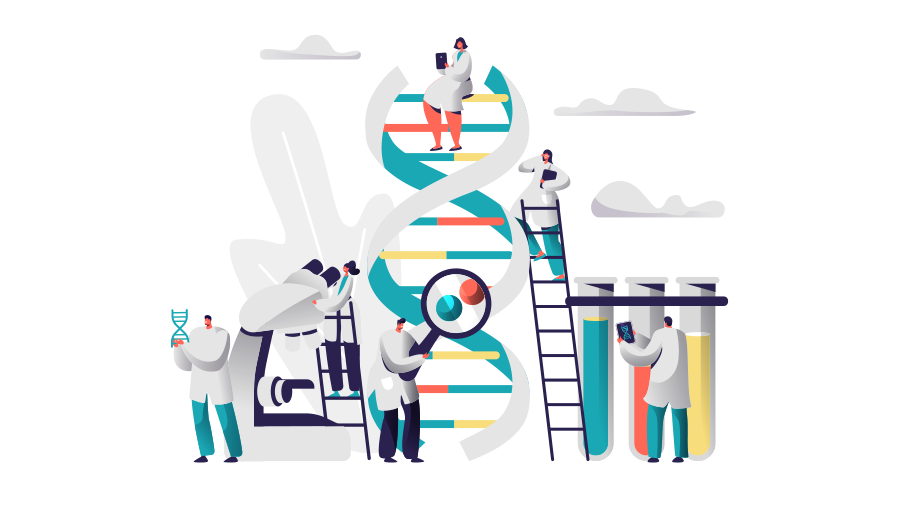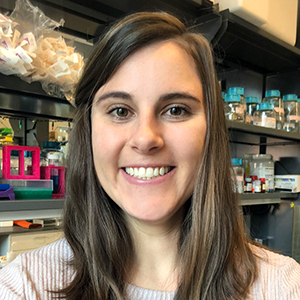Climbing the research ladder in industry
When I started writing about careers in industry, I didn't fully realize how many different job titles there would be. Even when just focusing on careers in research, the terminology can get confusing, and it can be hard to know what types of job titles to search for.
So, this week I’m breaking it down. The positions described below start at the most junior and move up the theoretical research hierarchical ladder. Keep in mind that most employees aren't climbing that ladder from bottom to top — there are many different entry points into industry that will greatly depend on your education and experience.
Also keep in mind that no two career paths are going to look the same. Biotechnology and pharmaceutical companies vary in scope and size, both of which can influence career trajectories and timelines. Plus, everyone is different, so their career trajectories will reflect that. Try not to compare your career path with anyone else’s.
Also, today I'm focusing specifically on careers in bench research. Past industry career columns have described the many other roles scientists can have in industry — tech transfer, regulatory affairs, product sales and client support, medical affairs and so on.

Entry-level positions
Interns are the most temporary and entry-level positions in industry. As in other sectors, interns in industry (who are typically paid) work in a particular department or research division over a set course of time, typically three to six months. Internship opportunities may be more plentiful at the larger biotech and pharmaceutical companies, but it's always a good idea to reach out to a company you're interested in to ask if they have an internship program. Internships can be a great way for scientists in training — from undergraduate to Ph.D. level — to get experience in industry. Keep in mind that many internships do not lead to guaranteed jobs!
Laboratory technicians are largely support team members. They often play a role in making sure all the components are in place for researchers to conduct their experiments. This might involve making buffers, reagents or other similar tasks. Some lab tech jobs offer move involvement in experiments and research.
Research assistants or research associates perform the day-to-day research and experiments that keep projects moving forward. A master’s degree, or an equivalent amount of research experience, is often required. Of course, what that "equivalent" level of experience is will vary, but one to three years is typical. You might also see the job title “scientific researcher,” and that position has similar duties. With more experience, you can advance to senior research assistant (or, depending on the company, to research associate I/II/III), which will involve more responsibility. This could include some managerial work or experimental design and analysis.
Mid-level positions
Some companies offer postdoctoral fellowships for those who have recently completed their Ph.D.s. Depending on the company, these might be temporary positions (for a span of months to years but typically no more than two to three years) or promise a job at the end. Make sure to do your research on postdoctoral fellowships, as many don’t have any guarantee of jobs at the end (and some companies actually won’t, as a policy, hire postdoctoral fellows from their own programs). This is a great way to get industry experience if you’re just starting out and want to get a feel for it. Most fellowships provide more opportunities to publish and present your research than in a typical scientist position, although this will, again, vary by the specific program and company.
Research scientists also have hands-on roles in day-to-day research but have additional leadership responsibilities. They might be leading a group of research assistants or other scientists, planning experiments, analyzing data and/or deciding the direction of research needed to fulfill project goals. These roles typically require Ph.D.s, although a master's degree plus experience is sometimes sufficient. It’s always a good idea to check the job description to see if your experience matches the requirements. Sometimes referred to as just “scientist.” this position also has various levels. Scientist I, II, and senior scientist have differing levels of responsibility and leadership, but all focus on completing and directing research experiments and projects.
Some companies have principal scientist positions that fall between scientist and director jobs. These have a mix of both job responsibilities — a lot of managing and big idea work, but still tight connections to the ongoing research projects.
Upper-level positions
Next in the hierarchy is the director. Director roles typically proceed through associate director, director, and then senior or executive director. Directors are less involved in the hands-on conducting of experiments and research (although their involvement may vary based on the size of the company). Instead, they focus more on the bigger picture: How do the current experimental data support the project? Is the current research in line with the company’s goals?
These roles typically involve managing a group or team of other scientists as well (remember, industry loves teamwork!). Directors plan, oversee and direct the R&D operations within their divisions or departments. They also often are involved in developing strategy and operation plans for the company. As leaders, they are responsible for ensuring the R&D staff below them have the appropriate training and guidance to effectively do their jobs and move research forward.
The hierarchy after director positions gets less clear and depends on the individual company. Sometimes the next step is to become the head of a department, division or all R&D activities. Or a vice president title is next in line. In both cases, responsibilities shift further away from the bench and increasingly toward business management, development and companywide initiatives. A strong understanding of the research process and procedures is still required for these positions, so experience is a key factor when filling one of these positions.
As always, keep in mind that this is just an overview of what exists — not every company has every type of position, and a position might be listed under a slightly different name. Read the job description and qualifications to see if it matches with your degree and experience level. If you’re unsure if you’re under- or overqualified, you can reach out to someone at the company or apply anyways and get a better gauge during the interview process.
Enjoy reading ASBMB Today?
Become a member to receive the print edition four times a year and the digital edition monthly.
Learn moreFeatured jobs
from the ASBMB career center
Get the latest from ASBMB Today
Enter your email address, and we’ll send you a weekly email with recent articles, interviews and more.
Latest in Careers
Careers highlights or most popular articles

Exploring the link between lipids and longevity
Meng Wang will present her work on metabolism and aging at the ASBMB Annual Meeting, March 7-10, just outside of Washington, D.C.

Upcoming opportunities
Calling all biochemistry and molecular biology educators! Share your teaching experiences and insights in ASBMB Today’s essay series. Submit your essay or pitch by Jan. 15, 2026.

Defining a ‘crucial gatekeeper’ of lipid metabolism
George Carman receives the Herbert Tabor Research Award at the ASBMB Annual Meeting, March 7–10, just outside of Washington, D.C.

Building the blueprint to block HIV
Wesley Sundquist will present his work on the HIV capsid and revolutionary drug, Lenacapavir, at the ASBMB Annual Meeting, March 7–10, in Maryland.

Upcoming opportunities
Present your research alongside other outstanding scientists. The #ASBMB26 late-breaking abstract deadline is Jan. 15.

Designing life’s building blocks with AI
Tanja Kortemme, a professor at the University of California, San Francisco, will discuss her research using computational biology to engineer proteins at the 2026 ASBMB Annual Meeting.

